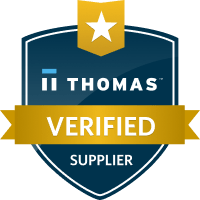How To Prepare Your Product For UKCA (UK Conformity Assessed)

Written by Hans Dittmar
The UKCA (UK Conformity Assessed) marking requires conformity with applicable UK regulations, which replaced the EU's CE mark in Great Britain following Brexit.
This will have an impact on many products sold in the UK.
If a portion of your products end up in the UK (England, Scotland, and Wales), you will want to pay close attention to the possible effects of this changing mark.
To prepare for UKCA marking, follow these steps:
- Understand the scope: Determine if your product falls within the scope of the relevant UK legislation, which will generally mirror the EU legislation that was previously applied. You can find guidance on the UK government website.
- Identify the relevant legislation: Identify the specific UK regulations that apply to your product. These regulations will cover areas such as safety, health, and environmental protection. Examples include the UK Toys (Safety) Regulations, the UK Personal Protective Equipment Regulations, and the UK Radio Equipment Regulations.
- Check applicable requirements: How will you validate conformity for your products? Depending on the product and the associated risks, different conformity assessment procedures may apply. These can range from self-assessment to third-party testing by a UK Approved Body (similar to EU Notified Bodies).
- Assess conformity: Ensure your product meets the essential requirements set out in the relevant UK regulations. This may involve updating technical documentation, testing, and inspection procedures to demonstrate compliance.
- Compile technical documentation: Prepare the necessary technical documentation to demonstrate conformity with the applicable requirements. This may include risk assessments, test reports, design calculations, and user instructions.
- Prepare a UK Declaration of Conformity (UK DoC): Create a UK DoC, which is a legally binding document declaring that your product meets the relevant UK regulations. Include information such as the product's description, the applicable legislation, and the manufacturer's details.
- Choose a UK Approved Body, if necessary: If your product requires third-party conformity assessment, select a UK Approved Body to carry out the assessment. These bodies are recognized by the UK government to assess products for conformity with UK regulations.
- Apply the UKCA marking: Once you have met all requirements, affix the UKCA marking to your product or its packaging, along with any other required markings. Ensure the marking is visible, legible, and indelible, and that you follow the specific size and format requirements.
- Maintain records: Keep documentation related to your product's conformity for a minimum of 10 years after the product has been placed on the market. This will help in case of any regulatory inquiries or disputes.
- Monitor changes: Keep abreast of changes to the relevant UK regulations and update your products and documentation accordingly.
Note: For products placed on the market in Northern Ireland, the CE marking still applies alongside the UKNI (UK Northern Ireland) marking. Ensure you follow the specific requirements for products in this region.
It's important to start preparing for UKCA marking as early as possible to avoid any disruption to your business. Engage with experts and industry associations to ensure you're aware of the latest requirements and best practices.




